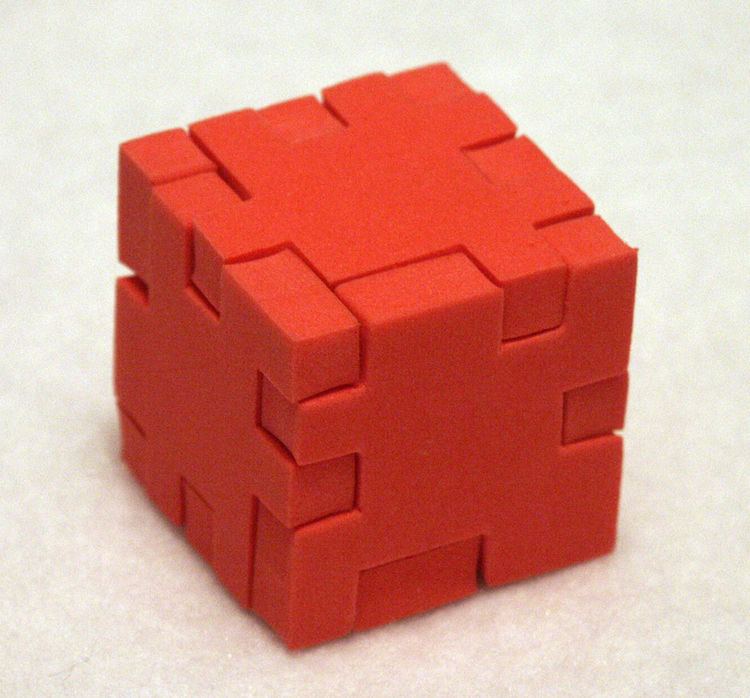 | ||
Happy Cubes are a set of mechanical puzzles created in 1986 by the Belgian toy inventor Dirk Laureyssens. The company "Happy bvba" has the exclusive license to manufacture and sell these puzzles. Happy Cubes are also known by a number of other names, among them: "Cube It!" cubes, "Wirrel Warrel" (in the Netherlands), "I.Q.ubes" and "Cococrash" (in Spain and Portugal).
Contents
The Happy Cubes were made of 8mm-thick ethylene-vinyl acetate foam mats (also known as EVA). The tiles were based upon a 5x5 matrix where the outer squares may be present or absent. The central 3x3 kernel was fixed. Initially the puzzle is assembled into a 2-dimensional, flat 2x3 piece rectangle fitted into a frame. The basic challenge is to construct a perfect, 6-sided cube out of these 6 pieces. Usually, there is only one way to fit the pieces into a complete cube and it can be reached with various levels of difficulty by trial and error.
Variations
There are four families of Happy Cube puzzles, each containing 6 different cubes. Each family has a unique texture, style and difficulty level. Within each puzzle family the cubes are differentiared by color. The four families of Happy Cube puzzles are:
Solutions
The basic challenge of the Happy Cubes puzzles is to construct a single perfect cube from the 6 pieces of a single puzzle which share the same color scheme and texture. A subsequent challenge to this is to fit the pieces back into the 2-dimensional frame from which they came.
With the presence of more than one puzzle available, pieces of several different cube puzzles can be joined together to make up larger and more complex structures other than the basic 6 faced cube. Some structures are more difficult to construct than others and the more pieces available, the easier it is to find a solution that makes a closed shape since there are more options of pieces to choose from. With enough pieces, virtually any structure imaginable can be constructed.
Two of the most popular complex structures are the 2×2×2 cube which is a perfect cube with each face made of 4 pieces (all in all, 24 pieces) and the Star structure, which is made of 6 cubes attached in a single-cube sized common centre (all in all, 30 pieces). Several computer applications exist to aid in the process of designing large structures and finding solutions for them automatically.
